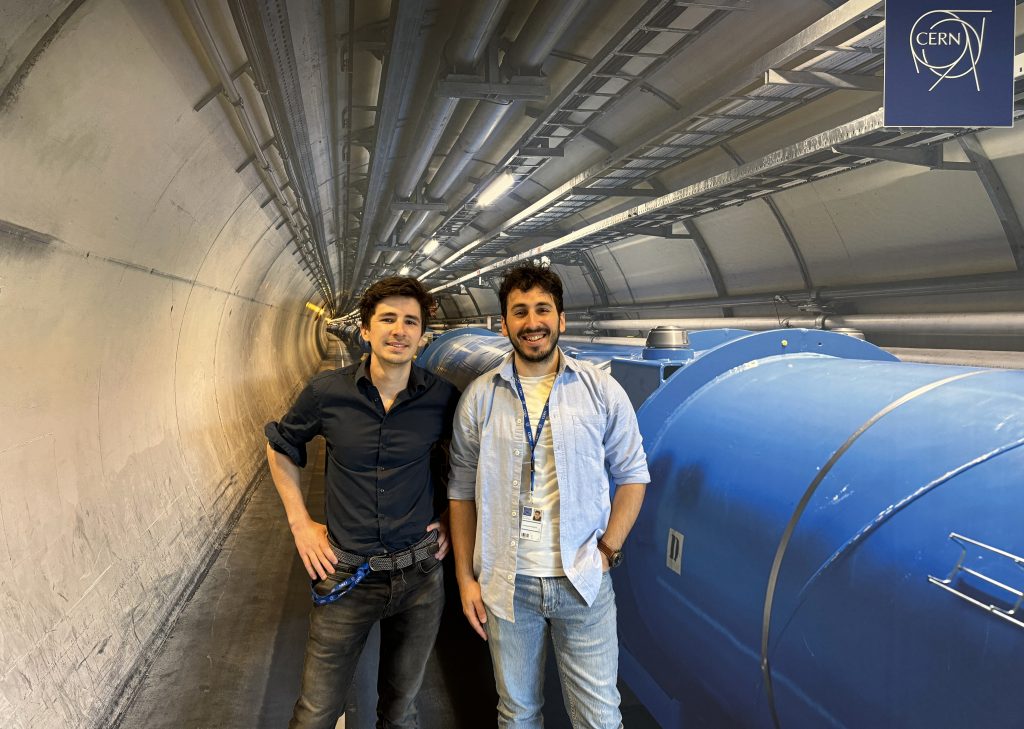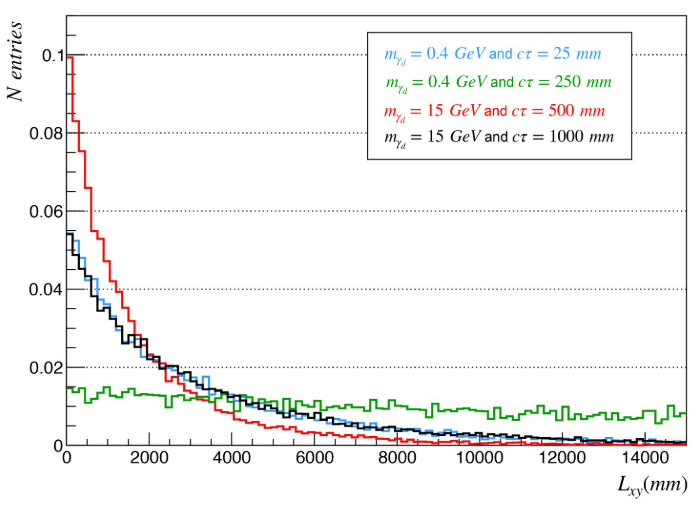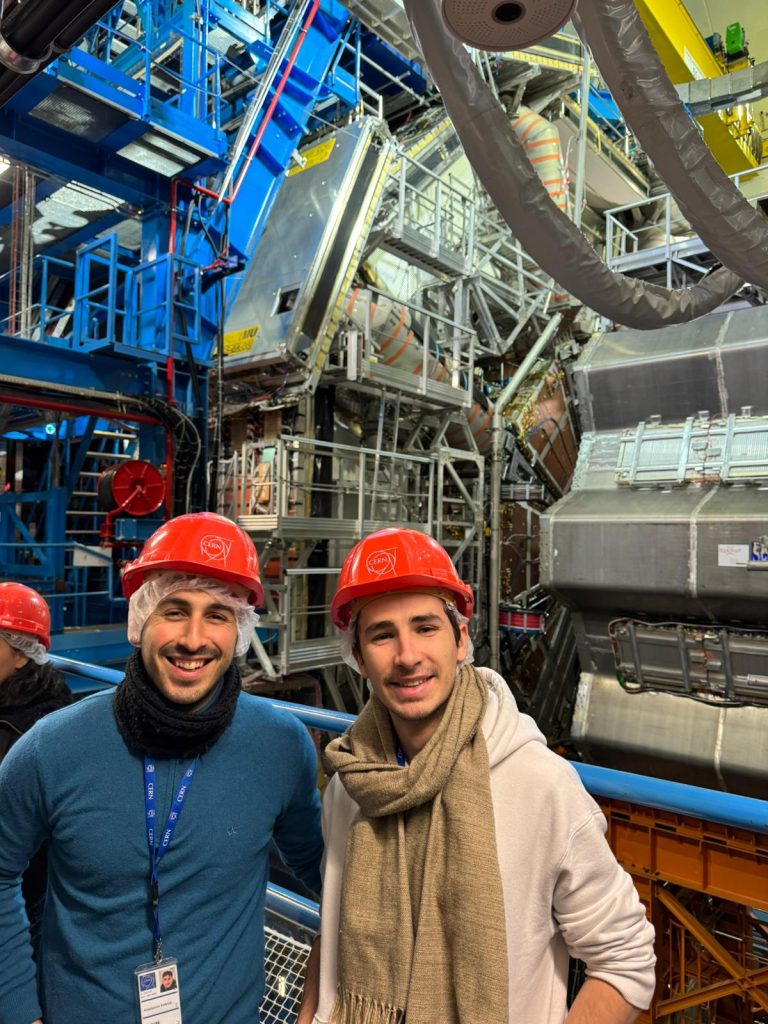Tasos and Erwan reflect on their time at CERN through the NGT Exchange Programme

As part of the Next Generation Triggers (NGT) exchange programme, we recently welcomed two master’s students from Uppsala University—Anastasios Kakos (Greece) and Erwan Larie-Kerboull (France)—. Working under the supervision of Prof. Rebeca González Suárez and collaborating with NGT fellows Maria Carnesale and Rimsky Rojas Caballero, both are exploring machine learning techniques to enhance ATLAS’ Level-0 trigger capabilities. We sat down with them to learn more about their background, their work, and their impressions of working at the world’s largest particle physics lab.
Can you introduce yourselves and tell us how your collaboration with NGT began?
Tasos:
My name is Anastasios Kakos — people call me Tasos. I’m from Thessaloniki, Greece, and I’m currently doing my master’s in nuclear and particle physics at Uppsala University in Sweden. When I started looking for a thesis project, I reached out to our supervisor, Prof. Rebeca Gonzalez Suarez. She put me in contact with Verena Martinez and Oliver Kortner from the Next Generation Triggers (NGT) project — they coordinate Work Package 2.2.
They introduced me to the idea of using machine learning to enhance the Level-0 muon trigger in ATLAS for identifying displaced muons. It was such a perfect mix of physics and machine learning that I knew right away this was what I wanted to work on.
Erwan:
And I’m Erwan Larie-Kerboull, from Paris, France. Like Tasos, I’m also studying at Uppsala University, specializing in particle physics. My background is actually in engineering — I transitioned into physics later, and this project really appealed to me because of the technical and scientific depth.
Tasos had already started working on it when I was still looking for a topic, and Rebecca suggested that we might be able to collaborate. Since the project was big enough for two people and we were already classmates, it made a lot of sense. We teamed up and started working together from there.
Could you tell us a bit more about your research in collaboration with NGT?
Tasos:
So, we’re focusing on improving the trigger system of ATLAS — specifically, identifying displaced muons, which are particles that originate from long-lived particles (LLPs) that decay at some distance from the interaction point. These signatures are crucial in the search for new physics beyond the Standard Model, but right now ATLAS doesn’t have a dedicated trigger for them.
We’re trying to train neural networks to recognize these displaced muons. We’re using simulated data based on a model called the Hidden Abelian Higgs Model, which predicts dark photons as mediators between the current Standard Model and a hidden dark sector— basically, a possible portal to dark matter. We’re also combining that with real ATLAS background data.

Erwan:
Exactly. Tasos is working on convolutional neural networks (CNNs), while I’m focusing more on recurrent neural networks (RNNs). The idea is to develop architectures that can be implemented efficiently in hardware trigger systems for the HL-LHC era.
The challenge is making these models fast and accurate enough to run on the first-level hardware triggers — which is no easy task!
You started your collaboration with NGT remotely — how has being on-site through the Exchange Programme impacted your experience and your work?
Erwan:
Being at CERN made everything much more real. Before, we were working from Sweden, doing Zoom meetings and reading documentation. But here, you’re walking through the corridors, meeting people face-to-face, and discussing ideas over coffee. It speeds things up — communication is faster, and the feedback is more immediate. And the atmosphere itself is inspiring. You’re surrounded by people working on cutting-edge science, and that really motivates you.
Tasos:
Yes, absolutely. When we first came in January, even before the Exchange Programme, we had the chance to visit the ATLAS detector. Seeing it in person made a big difference — suddenly everything we’d only read about had a physical shape.
Now, during these two weeks with the Exchange Programme, we’ve been working closely with Maria Carnesale and Rimsky Rojas Caballero. We’ve had deeper technical discussions and gained a better understanding of how the trigger system works. It’s not just the productivity boost — although that’s definitely real — it’s also about getting a clearer picture of how everything connects.

Erwan:
And beyond the work itself, the experience of being part of CERN is incredible. It’s like a small city with its own rhythm. There’s so much going on — people from all over the world, clubs, events… it’s easy to feel part of a real community. That sense of belonging and shared purpose is hard to get over a Zoom call.
Both students are set to present their master’s theses in early June at Uppsala University, and they hope to stay involved in NGT beyond graduation.
Tasos:
Now that we’ve gotten deeper into the project, it’s hard to let go. We’d love to stay involved and continue contributing if the opportunity arises.
Erwan:
There’s real momentum now. We’ve learned so much, and there’s still more to do. If we can stay connected to this work — maybe through a PhD or other role — we’d absolutely go for it.
Anastasios and Erwan’s story are a great example of what the NGT Exchange Programme was created for: enabling researchers and experts to connect, collaborate, and share their knowledge in the dynamic environment of CERN and abroad.
Their work in NGT on muon triggers and machine learning isn’t just an academic exercise — it’s part of a broader push to prepare for the challenges and opportunities of the High-Luminosity LHC.
We wish them all the best as they present their theses and look forward to hopefully welcoming them back to NGT and CERN soon!